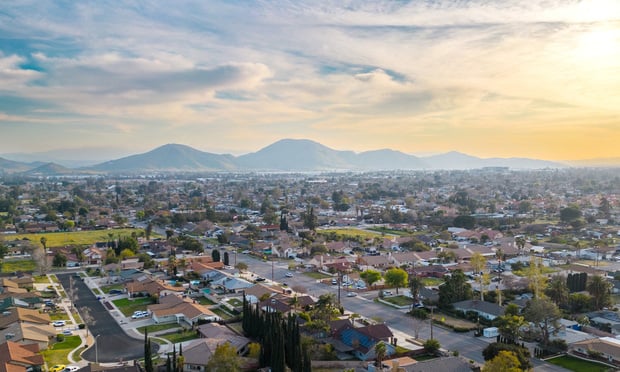Exurbs Emerge as America's Fastest-Growing Communities

The U.S. Census Bureau does not define the term “exurb.” But it thinks of them “as far outer suburbs of metro areas, and they often have a mix of urban and rural character.”
Exurbs are attracting attention now because they are among the nation’s fastest-growing communities, according to Census data, even though many are located “30, 40 and even more than 60 miles away from the largest city’s downtown.”
An analysis by StorageCafe puts more meat on the Census’s bare-bones description. It defines exurbs more broadly as areas with fewer than 250 residents per square mile in the first year of its 10-year analysis. It found that housing inventory in exurbs grew by an average of 15% over the decade, outpacing suburbs at 14% and principal cities at 10%. Population growth at 16% also outpaced suburbs (13%) and principal cities (9%).
“Our data reveals that five of the top 10 places with the fastest-growing housing inventories over the past 10 years were exurbs, which have now transitioned to suburban status based on population density,” the StorageCafe report stated.
People living in the exurbs are generally highly educated, according to the American Communities Project, a program of Michigan State University School of Journalism. Some 36% have bachelor’s degrees with the child poverty rate at 11% — six points lower than the national average. Broadband access is among the highest in the nation, though access to physicians and mental health providers is below the national average.
The Census attributed the rapid increase of population in exurbs to two main factors: rising housing costs in areas including suburbs closer to the central cities and the growth of remote work opportunities. These trends began before the pandemic and continued afterward. Experts say exurbs also appeal to Millennials and Gen Zers seeking a more balanced lifestyle closer to nature, along with a sense of community.
“There were more exurbs among the nation’s fastest-growing places in 2023 than in 2019, the year before the pandemic hit. At the same time, there were fewer (103 compared to 125) fast-growing places within a 10-mile radius and a 10–20-mile radius (157 compared to 175),” the Census reported.
It cited the example of the Phoenix-Mesa-Chandler metro area in Arizona, now the nation’s 10th largest. Growth in Phoenix itself dropped from 1.6% to 0.4% from 2018-2019 and 2022-2023 respectively, a phenomenon repeated in close-in suburbs like Scottsdale, Mesa and Gilbert.
In contrast, suburbs more distant from downtown Phoenix saw high rates of growth. Maricopa was up from 4.2% to 7.1%, Casa Grande from 4.2% to 7.1%, and Eloy from 1.5% to 8.6% over the same period. “All told, these exurbs contributed fully one-third of the entire metro area’s population growth last year, compared to just 4% from 2018-2019,” the Census report noted.
Many other states have also seen rapid exurb growth, notably Florida and Texas, especially near Dallas, Houston, Austin and San Antonio.
However, the growth of exurbs is not without its challenges. A paper by Rebekah F. Barfield, a Texas Lyceum fellow in The Bush School at Texas A&M University, drew attention to the infrastructure consequences of exurb growth in the state and the needs they have generated.
As school enrollment has exploded, it has created a need for additional flexible funding and resource channels. Wetland loss, especially in the Houston area, requires additional state funding to support stormwater management and monitor development. More traffic on rural roads from the exurbs to workplaces in cities has made it increasingly urgent for the state to step up spending on road improvements.
“One thing is clear,” Barfield wrote. “The number of commuters on the roads from Texas exurbs to the metropolitan counterparts has grown by tens of thousands over the past decade, and that number will continue to grow. It is crucial that state and local policymakers understand the unique features of the exurbs and how their infrastructure is impacted by the changing demographics and population growth.”